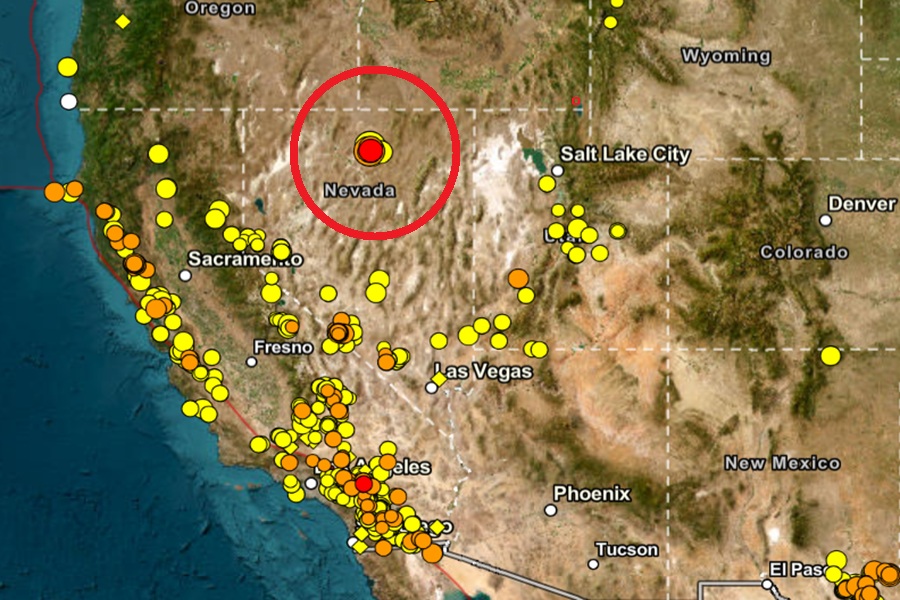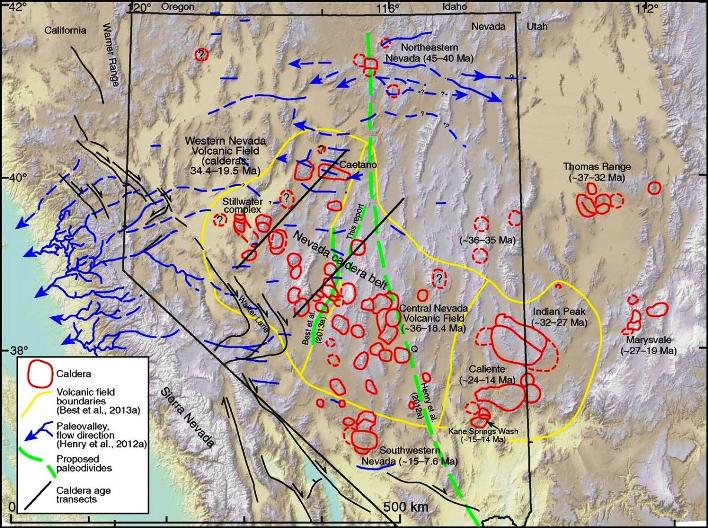
A surge of earthquake activity in Nevada has prompted concerns something more severe is brewing, but USGS hasn’t suggested that any larger event like a new volcano is in the works. Nevertheless, there have been more than 150 noteworthy earthquakes, including 38 in the last 24 hours near Hot Lake, Nevada. This is an increase from the 36 experienced in the 24 hours ending yesterday. Most of the earthquakes have been rated with a magnitude in the 3’s; the strongest, a magnitude 4.8, struck on Saturday.
Shaking from these earthquakes have been felt in nearby communities like Elko and Winnemucca in Nevada and as far north as Boise City in Idaho.
According to USGS, earthquakes with a magnitude of 2.0 or less are rarely felt or heard by people, but once they exceed 2.0 , more and more people can feel them. While damage is possible with magnitude 3.0 events or greater, significant damage and casualties usually don’t occur until the magnitude of a seismic event rises to a 5.5 or greater rated event.

With an increasing number of earthquakes, some which are stronger than others, all located near hot springs, some are concerned this could be the sign of something volcanic happening.
Nevada is no stranger to volcanoes, although much of the volcanic activity stopped millions of years ago. Violent volcanism continued in the southwest until about 7 million years ago, forming the ancestral Cascade arc. Additionally, the Walker Lane , an area of northwest trending right-lateral strike-slip faults, formed 12 million years ago. Walker Lane is associated with some of the most intense eruptions, such as the 16 to 6.5 million year old Southwest Nevada volcanic field.
The volcanic activity has produced interesting geology around the state. During the last 10 million years, volcanic activity shifted to bimodal volcanism with basalt lava flows alternating with rhyolite domes. Dark gray to black basalt and pink or brown rhyolite are particularly common in Elko, Washoe and Humboldt counties. Some small cinder cones formed as recently as the Pleistocene and the Nye County Lunar Crater volcanic field was active only 15,000 years ago. In Nevada’s recent geologic past, tectonic changes have created normal faults and creating the basin and range horst and graben terrain common there.
The Hot Lake area where the ongoing swarm is based is one of many natural hot spring locations located around the state. Famous for its gambling and nightlife, Nevada is also famous among earth scientists for its natural hot springs. Nevada has more hot springs than any other state in the U.S., with more than 300. Some are also especially hot, exceeding 200˚F in temperature.
Hot springs in Nevada are caused by geothermal heat from the earth’s interior, a result of the region’s thin crust and Basin and Range faulting. Rain and snow seep deep underground, circulates along these faults, and gets heated by this shallow heat source. The hot water then rises to the surface, creating hot springs.
Currently, scientists believe the earth movement occurring in Nevada is more the result of water entering deep through those faults and heating rather than magma approaching the surface, which would be the case in a soon-to-erupt volcano.
USGS monitors volcanic activity in Nevada through the USGS California Volcano Observatory (CalVO), which covers California and Nevada. While there are no volcanoes considered “active” in the sense of current eruption, Nevada does have several volcanic fields with geologically recent volcanic activity, such as the southwestern Nevada volcanic field near Yucca Mountain, where the Lathrop Wells cone is the site of the most recent volcanism.
The last volcanic eruptions in Nevada occurred between 38,000 and 10,000 years ago. While Nevada does not have currently active volcanoes, evidence of more recent activity, such as the Lunar Crater Volcanic Field and the Timber Mountain Volcanic Field, points to eruptions from thousands of years ago.
For now, USGS and CalVO continue to monitor the situation in Nevada. People should be prepared for more, and possible stronger, earthquakes in the days ahead. But expecting a volcano to erupt, at least according to the expert, is extremely improbable.